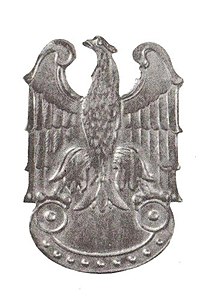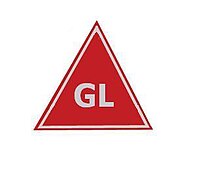Gwardia Ludowa
| People's Guard | |
|---|---|
| Gwardia Ludowa | |

Eagle of GL
|
|
| Active | 1942 – 1 January 1944 (transformed into People's Army) |
| Country | Poland |
| Allegiance | Polish Workers' Party |
| Role | Armed forces of the Polish Workers' Party |
| March | Marsz Gwardii Ludowej |
| Engagements |
World War II Zamość Uprising Warsaw Ghetto Uprising |
| Commanders | |
| Notable commanders |
Franciszek Jóźwiak |
| Insignia | |
| Identification symbol |
 |
Gwardia Ludowa (Polish pronunciation: [ˈɡvardja luˈdɔva]; People's Guard) or GL was an underground armed organization created by the communist Polish Workers Party in German occupied Poland, with sponsorship from the Soviet Union. Formed in early 1942, within a short time Gwardia Ludowa became the largest clandestine fighting force on Polish soil which refused to join the structures of the Polish Underground State loyal to the government-in-exile based in London. In the January 1 of 1944 GL was incorporated into the communist Armia Ludowa.
Gwardia Ludowa was created on 6 January 1942 with military aid from the Red Army. The availability of firearms led to GL instant growth to 3,000 fighters. Gwardia Ludowa was connected to the NKVD intelligence services of the Soviet Union. It was tasked with fighting against Germany by means of partisan warfare, sabotage, and reprisal actions. The full size partisan detachments were formed in May 1942 although foray groups were organized earlier. They operated near Piotrków and Radom. By the end of the year the organisation was divided onto seven administrative districts including Warsaw, Lublin, Radom-Kielce, Kraków, Łódź, Silesia and Lwów.
First major operations of GL consisted of disassembling train tracks. Until December 1942 some 50 railway lines were damaged resulting in 30 German supply trains being disabled. Some 30 insurgents were caught and hanged, but the number of units grew to over 30 in the same time. The most prominent sabotage action took place on 16 November 1942 along the railway line Radom – Łuków – Terespol, where five trains and a bridge were destroyed with the use of Soviet explosives. Another five trains were derailed around Oświęcim on 25 February 1943. Throughout the year, trains were damaged around Warsaw in Olszynka Grochowska, Elsnerów, Legionowo, Żyrardów and Żywczyn. In total, Gwardia Ludowa caused damage to 169 trains in 1943, as well as 113 train stations, resulting in 55 temporary line shut-downs.
...
Wikipedia
